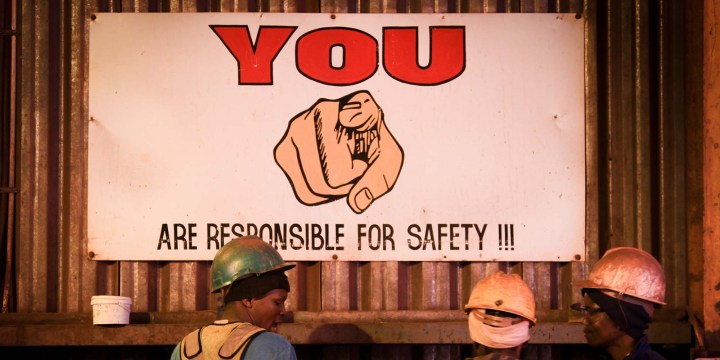MINING SAFETY MILESTONE
Minerals Council SA reports industry’s first fatality-free month in January

In the wake of the news that accidental deaths in South Africa’s mining industry reached a record low of 49 in 2022, another safety milestone has been achieved. During January this year, the sector recorded its first calendar month without a death. That this is a milestone underscores the scale of the historical carnage that has been wrought underground.
During the month that just ended, not a single South African mine worker was killed on the job.
Over the course of more than a century of industrial-scale extraction since the late 19th century, January 2023 was the first fatality-free calendar month in the history of South African mining, according to the sector’s main umbrella body, the Minerals Council SA.
That this is a milestone underscores the scale of the historical carnage that has been wrought underground. Mining accidents have claimed the lives of over 80,000 miners in South Africa since the late 19th century, and over a million have been injured.
This speaks to a tortured history of racial exploitation on a grand scale, with a migrant labour force from the rural hinterlands drawn into the menacing jaws of an industrial economy that, in many cases, literally mangled workers before spitting them out. That migrant labour force also saw its real wages decline for decades in the 20th century, according to numerous historians.
But the whole system delivered fat dividends for investors and laid the foundation for the apartheid political economy.
A lot has changed, especially since the end of apartheid in 1994, and the sector has made huge strides to improve its safety record, with a lot of prodding from labour, the government and investors, who would prefer not to have their dividends drenched in blood.
Accidental deaths in the mining industry, as we reported on Wednesday, reached a record low of 49 for a calendar year in 2022.
Read more in Daily Maverick: “Accidental deaths in SA mines fall to record low of 49 in 2022“
That still means that, on average, more than four mine workers were killed on the job every month last year. But so far in 2023, the monthly death toll is zero.
The reasons for this improving state of affairs are many. The decline in SA of deep-level gold mining – which by its very nature is hazardous – is obviously one.
Visit Daily Maverick’s home page for more news, analysis and investigations
In 1987, when South Africa was still the world’s top producer of the precious metal, its gold mines employed 554,000 people. By 2021, that number stood at 94,000, reflecting South Africa’s shrinkage to the world’s number 10 producer.
Fewer miners and fewer underground shifts should translate into fewer accidents, and overall South Africa’s mine labour force is about half of what obtained in the 1980s. But this is far from the only reason. More telling measurements, such as “fatality frequency rates” (FFR), measuring deaths per million hours worked, have also fallen sharply in recent years.
And for January 2023, for the first time, South Africa’s FFR will be zero for a calendar month.
This in turn speaks to a range of trends, from mechanisation to safer blasting practices to the roll-out from a decade ago of overhead safety netting and many other measures and practices.
“Among the leading practices adopted by South Africa’s underground mines are permanent meshes held up with bolts in tunnels and working areas, brightly lit working areas so miners can check for dangers rather than just relying on their cap lamps, safer ways to remove loose rocks from the roofs and walls of tunnels and working areas, and improved methods to identify loose rocks,” the Minerals Council said in a statement.
South Africa’s geology is dangerous, but it is becoming more forgiving. And one can only hope that January’s achievement will be repeated in February. DM/BM

















 Become an Insider
Become an Insider
Comments - Please login in order to comment.